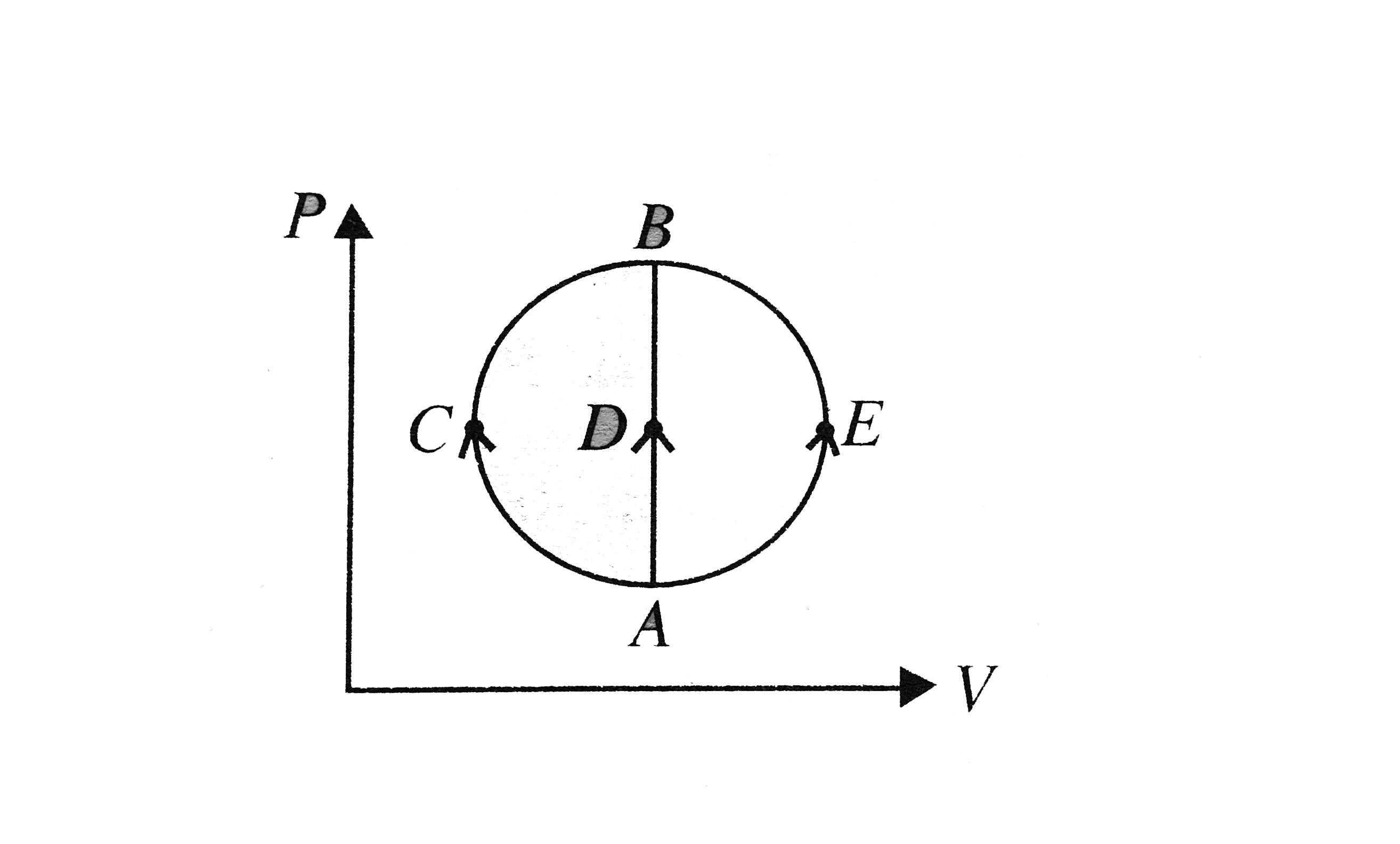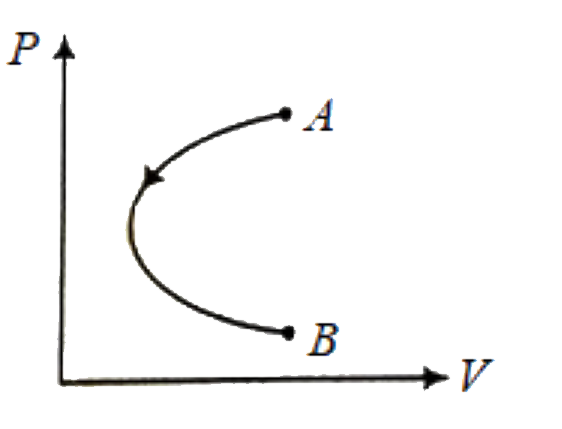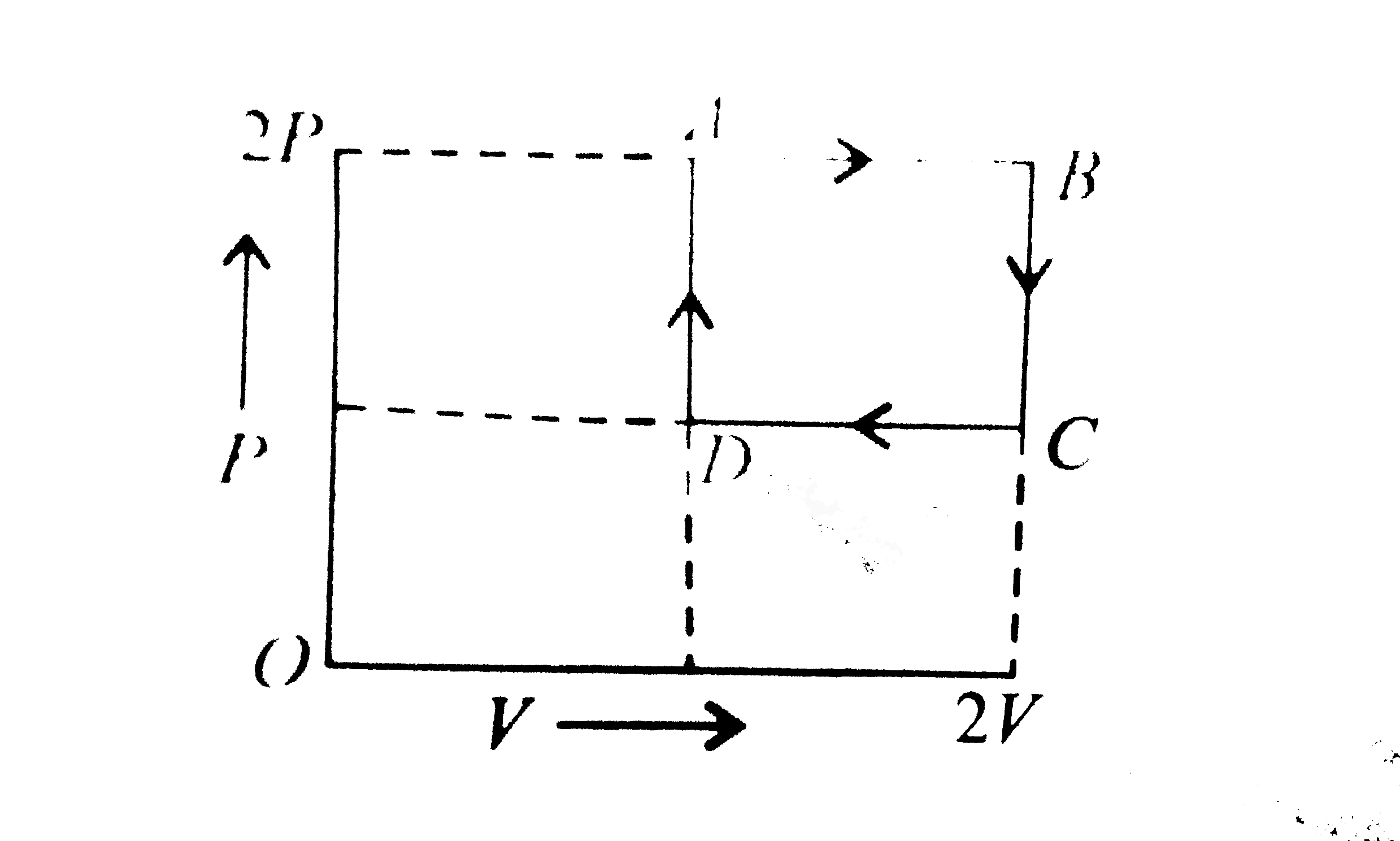An ideal gas is taken from the state A (pressure p, volume V) to the state B (pressure p2, volume 2V) along a straight line path in the p-V diagram. Select the correct statement(s) from the following.
The work done by the gas in process A to B exceeds the work that would be done by it if F62the system were taken from A to B along the isotherm.
In the T-V diagram, the path AB becomes a part of a parabola.
In the P-T diagram, the path AB becomes a part of a hyperbola.
In going from A to B, the temperature T of the gas first increases to a maximum value and then decreases.
The correct Answer is:A, B, D
Work done by the gas in the process A to B exceeds the work that would be done by it if the system were taken from A to B along the isotherm. This is because the work done is the area under the P−V inicator diagram will be more than that in the second diagram. When we extrapolate the graph shown in fig let P0 be theh intercept on the P-axis and V0 be the intercept on the V-axis. The equation of the line AB can be written as

P=−P0V0V+P0 , [∴y=mx+c] (i)
To find a relationship between P and T , we use
PV=RT⇒V=RTP (ii)
From Eqs. (i) and (ii),
p=−P0V0×RTP+P0
⇒P2V0−PP0V0=−P0RT (iii)
Relation between P and T is the equation of a parabola.
Also PV=RT
∴P=RTV (iii)
From Eqs. (i) and (ii),
RTV=−P0V0V+P0
⇒Rt=−p0v0v2+p0V (iv)
The above equation is of a parabola (between T and V)
T=−P0V0RV2+P0RV
Differentiating the above equation w.r.t. V we get
dTdV=−P0V0R×2V+P0R
when dTdV=0 ,
then P0V0R×2V=P0R ⇒V=V02
Also d2Td2V=−2P0V0R=−ve
⇒V=V0/2 is the value of maximum of temperature
Also PAVA=PBVB⇒TA=TB (From Boyle's law)
⇒ In going from A and B , the temperature of the gas first inceases to a maximum (at V=V0/(2) and the decreases and reaches back to the same value.
Topper's Solved these Questions
- BOOK - CENGAGE PHYSICS ENGLISHCHAPTER - ARCHIVES 1 VOLUME 6EXERCISE - Assertion-Reasoning1videos
ARCHIVES 1 VOLUME 6
- BOOK - CENGAGE PHYSICS ENGLISHCHAPTER - ARCHIVES 1 VOLUME 6EXERCISE - Comprehension3videos
ARCHIVES 1 VOLUME 6
- BOOK - CENGAGE PHYSICS ENGLISHCHAPTER - ARCHIVES 1 VOLUME 6EXERCISE - Single Correct54videos
ARCHIVES 1 VOLUME 6
- BOOK - CENGAGE PHYSICS ENGLISHCHAPTER - ARCHIVES 2 VOLUME 6EXERCISE - Integer4videos
ARCHIVES 2 VOLUME 6
Similar Questions
The pressure and volume of a gas are changed as shown in the p-V diagram in the figrue ahead. The thmperature of the gas
 View Solution
View SolutionThe pressure p and volume V of an ideal gas both increase in a process.
View SolutionAn ideal monatomic gas is at P0,V0. It is taken to final volume 2V0 when pressure is P0/2 in a process which is straight line on P−V diagram. Then
 View Solution
View SolutionAn ideal gas has pressure P, volume V and temperature T. Select the correct option.
View SolutionThe pressure P and volume V of an ideal gas both decreases in a process.
View SolutionOne mole of an ideal gas is taken from state A to state B by three different processes (a) ACB, (b) ADB and (c ) AEB as shown in the P−V diagram. The heat absorbed by the gas is
 View Solution
View SolutionOne mole of an ideal gas is taken from state A to state B by three different processes (a) ACB, (b) ADB and (c ) AEB as shown in the P−V diagram. The heat absorbed by the gas is
 View Solution
View SolutionAn ideal gas undergoes an expansion from a state with temperature T1 and volume V1 through three different polytropic processes A,B and C as shown in the P−V diagram. If |ΔEA|,|ΔEB| and |ΔEC| be the magnitude of changes in internal energy along the three paths respectively, then :
 View Solution
View SolutionP - V diagram of an ideal gas is shown. The gas undergoes from initial state A to final state B such that initial and final volumes are same. Select the correct alternative for given process AB.
 View Solution
View SolutionThe state of a mole of an ideal gas changed from state A at pressure 2P and volume V follows four different processes and finally returns to initial state A reversibly as shown below in the graph. By interpreting the graph, answer the following questions.

Which is the kind of process followed from state A to state, B?View Solution

